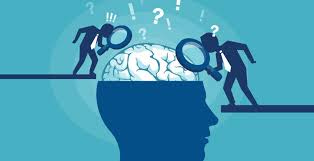Knowing Where to Start: Why Understanding Prior Knowledge Enables Effective Teaching
Hattie’s Visible Learning Effect Size Series – #7 of 20 - Prior Knowledge – Effect Size 0.94
To note: John Hattie’s Visible Learning research brings together over 1,500 meta-analyses, covering more than 90,000 studies and millions of students. Its aim is to identify what works best in education by measuring impact using ‘effect size’. In this context, an effect size of 0.4 is considered average progress over a year. Anything above 0.6 is seen as highly impactful. This blog is part of a 20-post series exploring the top-ranked influences in Hattie’s Visible Learning research, with a focus on practical strategies teachers can use to make a meaningful difference.
With an effect size of 0.94, what matters most is not the prior ability itself, but the teacher’s accurate assessment of it. Hattie’s research highlights the power of understanding where students are starting from, not to limit challenge, but to teach with greater clarity, direction, and impact.
When we assess prior knowledge well, we can teach with more clarity, adapt more purposefully, and build on what students already know. The goal is not to label, but to level up.
What Do We Mean by Prior Knowledge?
Prior knowledge refers to a student’s existing knowledge, understanding, and skill level before a new phase of learning begins. It is informed by:
• Pre-assessments and diagnostic tasks
• Previous attainment data
• Observations and teacher judgment
• Student self-assessments
Crucially, it is not just about scores. It’s about recognising patterns, gaps, misconceptions, and strengths that influence how a student will access the next steps.\
Why Is Accurately Identifying Prior Knowledge So Impactful?
• It supports teacher clarity — knowing what to teach and how to pitch it
• It allows for targeted scaffolding and differentiation
• It reduces time spent repeating what is already known
• It highlights misconceptions that could block progress
• It builds confidence by starting from what students can already do
Used well, knowledge of prior understanding allows us to meet students where they are and move them forward with precision.
Practical Strategies to Assess and Use Prior Knowledge
1. Begin Units with a Diagnostic Task
Use a short, low-stakes task to uncover understanding, not just recall.
For example: a concept map, sorting activity, or a “what do you already know?” brainstorm.
2. Track Patterns, Not Just Points
Use previous work and formative checks to identify trends over time.
Which types of questions are consistently secure or insecure? Where is progress flatlining?
3. Use Pre-Assessments to Group and Scaffold
Not to rank students, but to inform who may need more modelling, who might start independently, or who could benefit from peer collaboration.
Some schools use colour-coded response tasks to set starting points without setting limits.
4. Pair with Student Voice
Ask students what they feel confident in, what confuses them, or what they want to learn.
Sentence stems like: “I’m confident with…”, “I’d like help with…” work well in starter routines.
5. Make Adjustments Visible
Show students that you’re adapting based on what they bring.
“Because so many of you understood this in the pre-task, we’re moving straight to application today.”
Quick Wins for This Week
• Add one low-stakes “pre-check” to the start of a lesson or unit
• Try a “confidence continuum” line in the classroom and let students place themselves
• Review previous work and list the 3 most common areas of difficulty — then address them in your next lesson
Challenges and Considerations
It can be easy to confuse prior knowledge with fixed ability. The point is not to cap challenge, but to personalise starting points.
There’s also a risk of relying too heavily on prior attainment data without triangulating with observation, questioning, and self-assessment. Accuracy improves when we use multiple sources and professional judgment.
Understanding starting points is not a sorting mechanism — it’s a launchpad.
Reflections
When we know where students are starting from, we can take them further. Understanding what students already know sharpens teacher clarity — it helps us teach the right thing, in the right way, at the right time.
As you reflect, consider:
• Are your starting points clear and informed?
• Do your students know that you know what they know?
• How might making prior knowledge more visible help clarify next steps?
Try This
In your next planning session, ask:
“What do I already know about what they know?”
Then plan one small adaptation based on that insight.
Further Reading and Resources
• How to Use Pre-Assessment Effectively – ASCD
https://www.ascd.org/el/articles/turning-on-the-lights-what-pre-assessments-can-do
• The Importance of Knowing What Students Know – Education Week
Research Connections
• Hattie, J. (2009) – Visible Learning: A Synthesis of Over 800 Meta-Analyses
• Bransford, J. D., Brown, A. L., & Cocking, R. R. (2000) – How People Learn: Brain, Mind, Experience, and School
Visible Learning Blog Series
1. Collective Teacher Efficacy (1.57)
2. Self-Reported Grades (1.33)
3. Teacher Estimates of Achievement (1.29)
4. Response to Intervention (1.29)
6. Conceptual Change Programs (0.99)
7. Prior Knowledge (0.94) – Knowing where to start (You are here)
8. Strategy to Integrate with Prior Knowledge
9. Self-Efficacy
10. Teacher Credibility
11. Micro-Teaching
12. Classroom Discussion
13. Interventions for Learning Disabled Students
14. Teacher-Student Relationships
15. Spaced vs Massed Practice
16. Meta-Cognitive Strategies
17. Acceleration
18. Classroom Management
19. Vocabulary Programs
20. Repeated Reading Programs
Next up: Strategy to Integrate with Prior Knowledge - exploring how activating and connecting with what students already know can accelerate learning and deepen understanding.



Thanks for sharing. I agree - Prior knowledge is crucial as learning happens when we connect new knowledge to existing knowledge. So, ascertaining students’ schema is vital as it helps identify and address potential misconceptions.
My next post looks specifically at why connecting new learning to what students already know matters. Building upon the content of this post. Hope it is useful